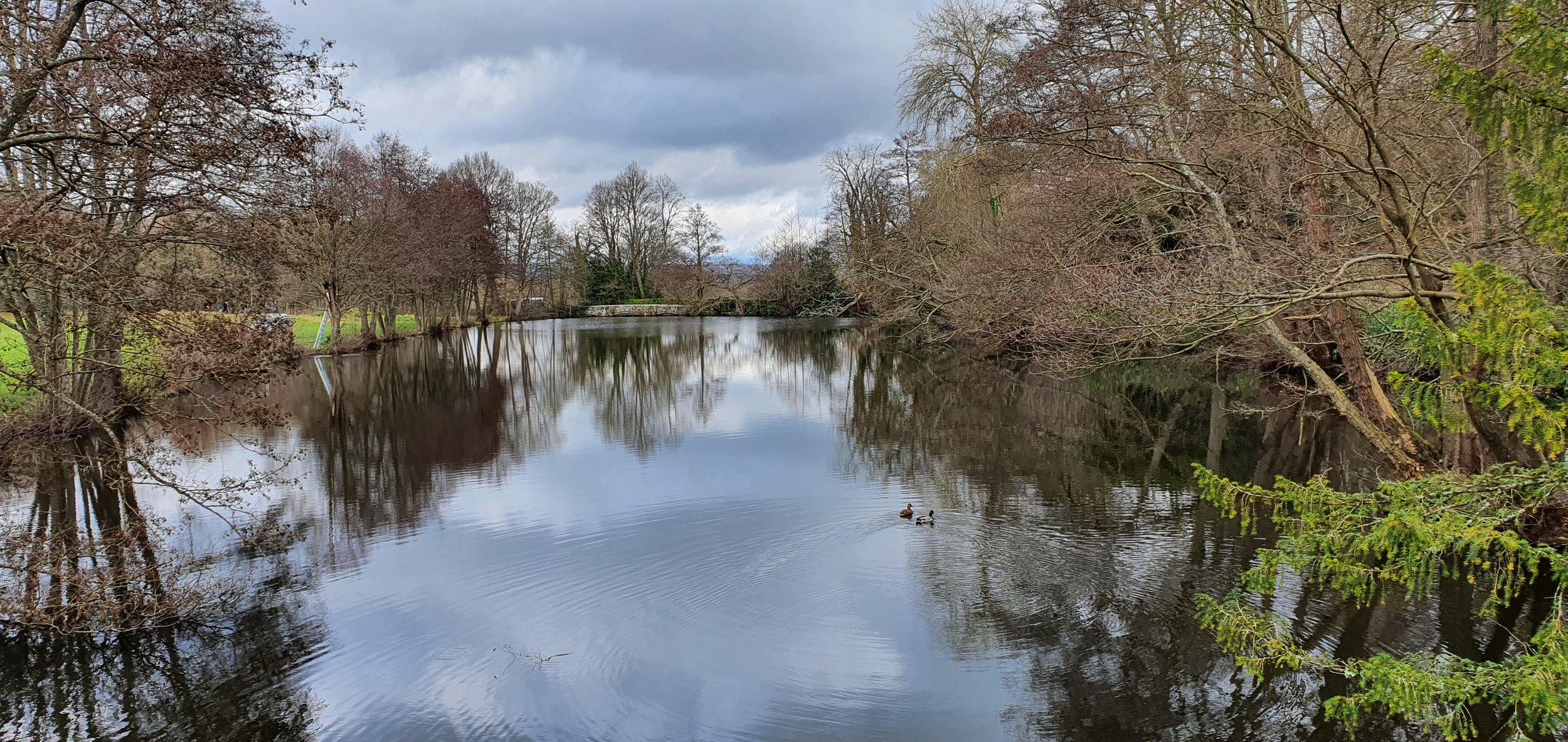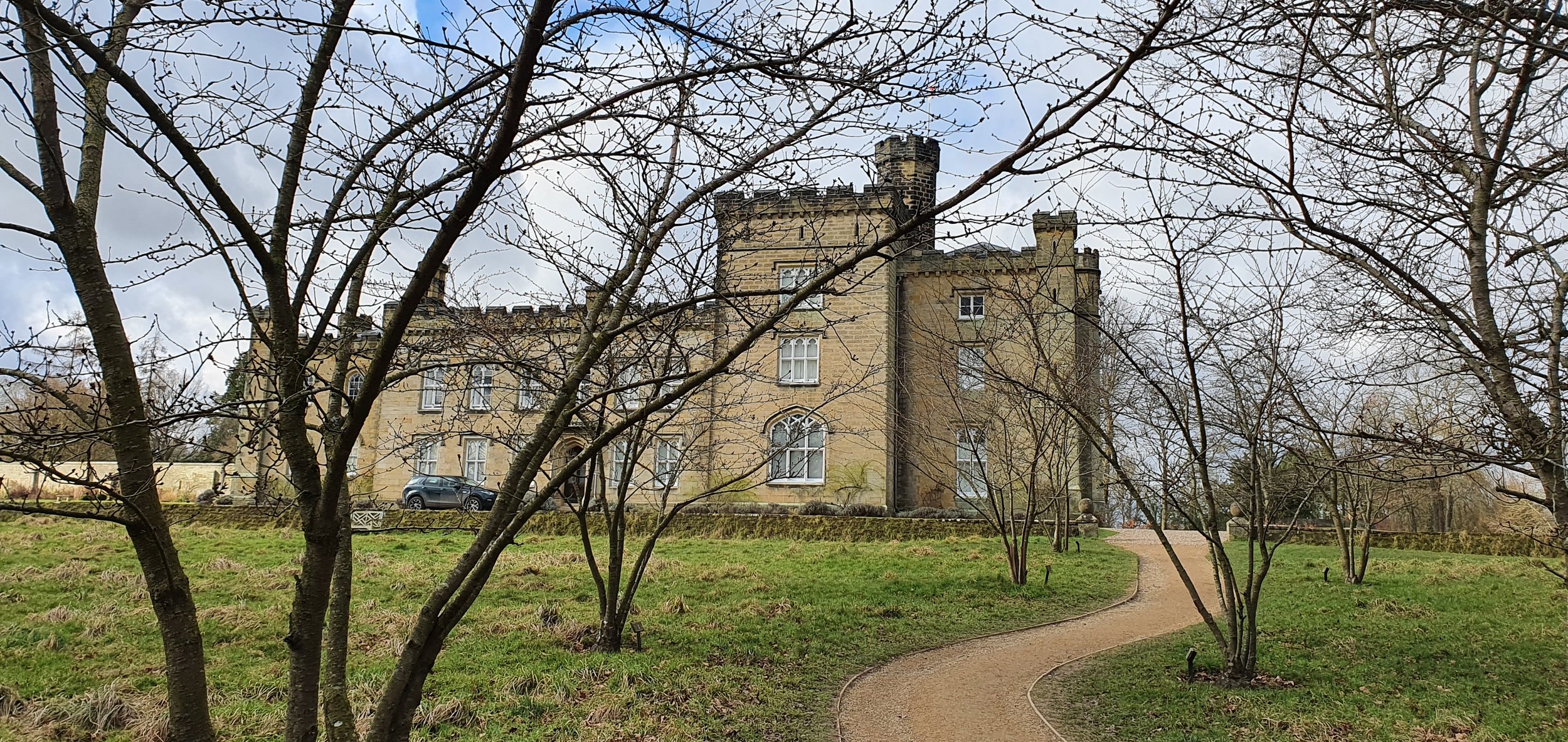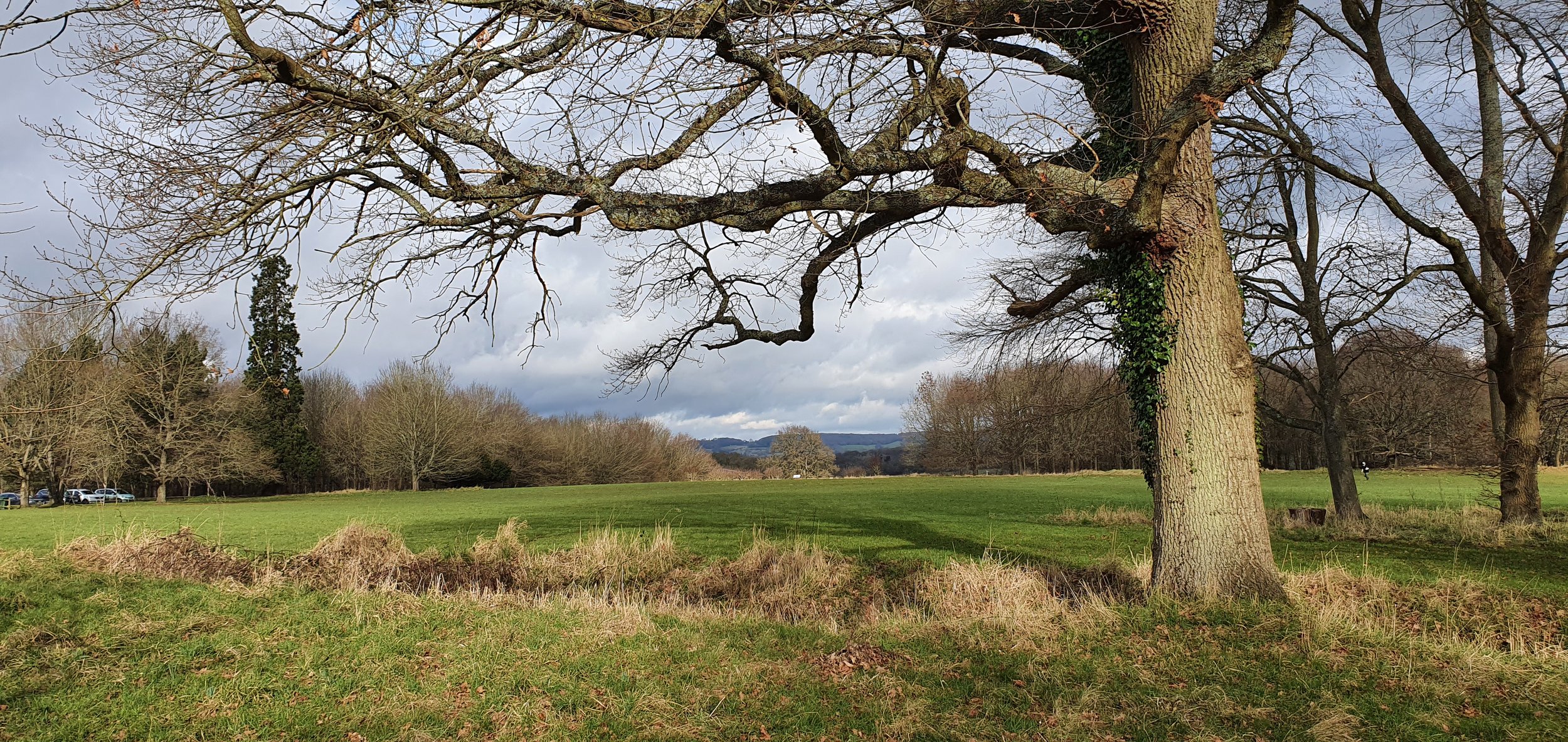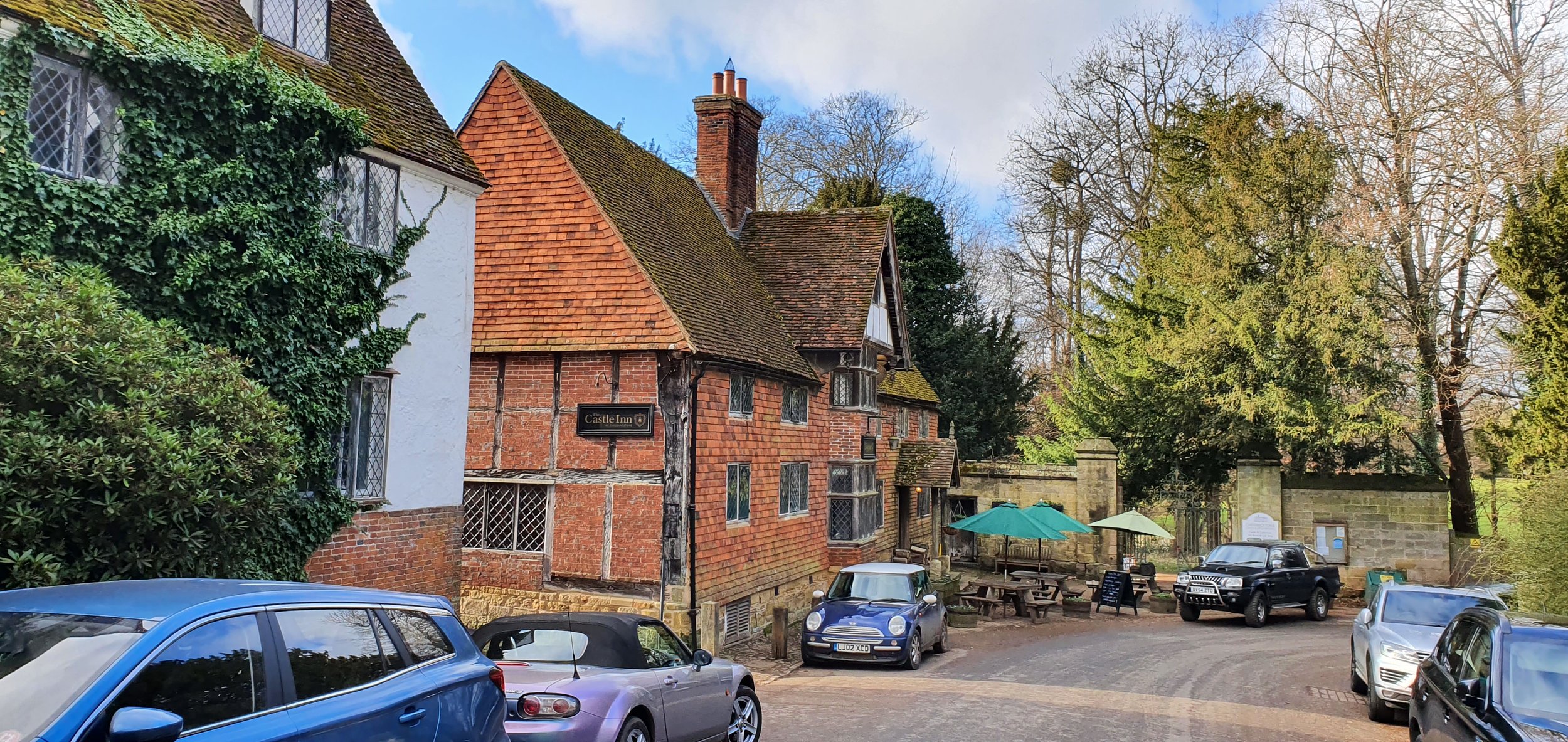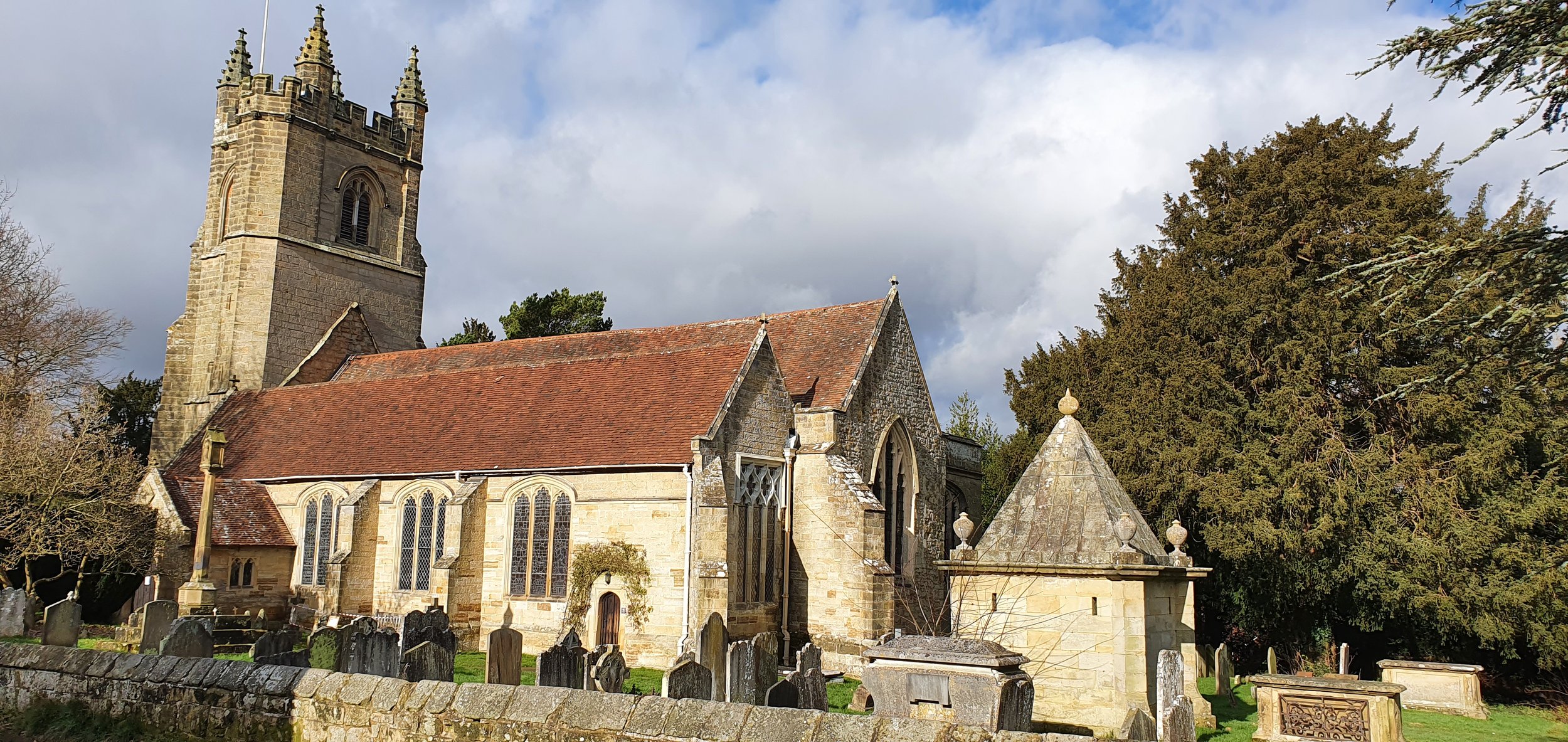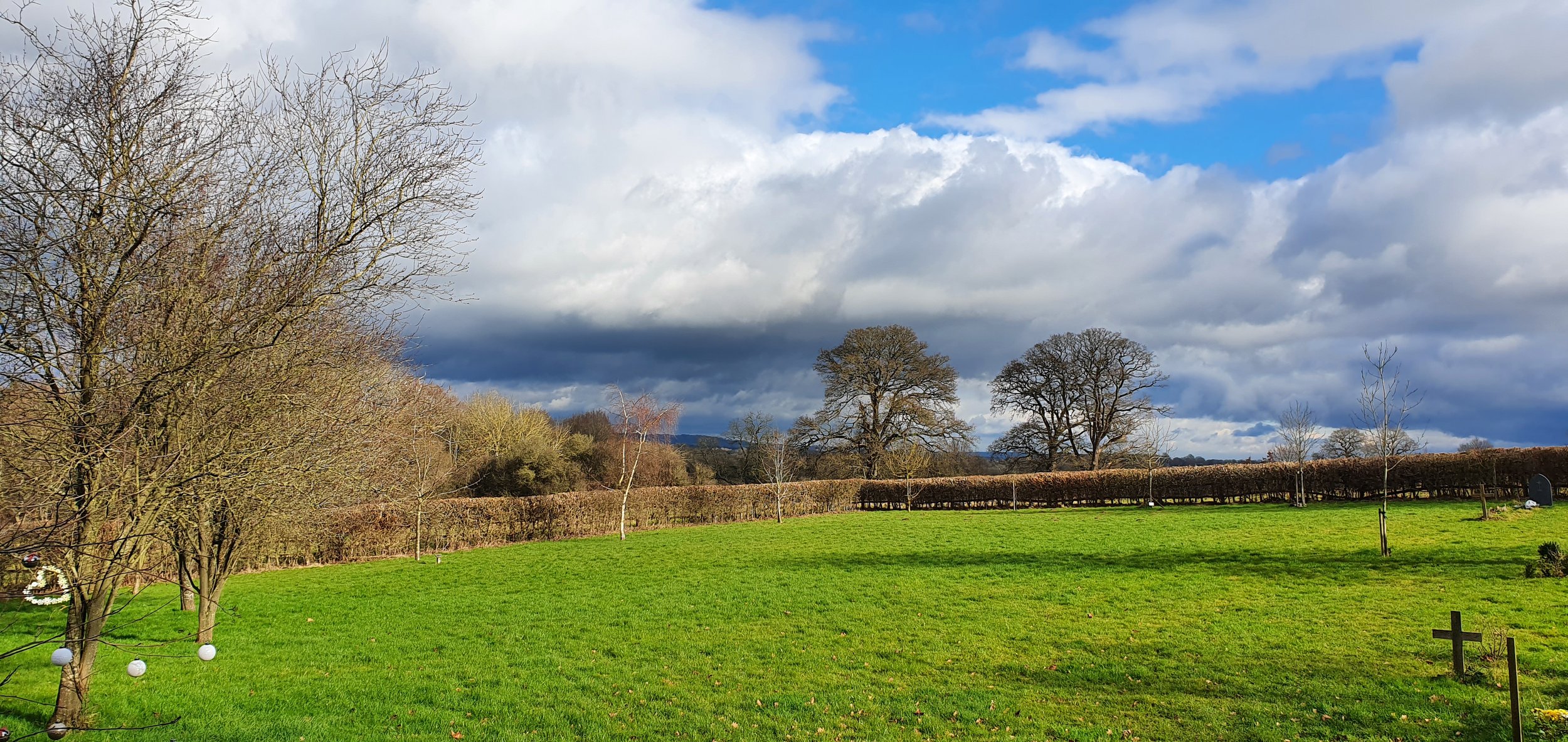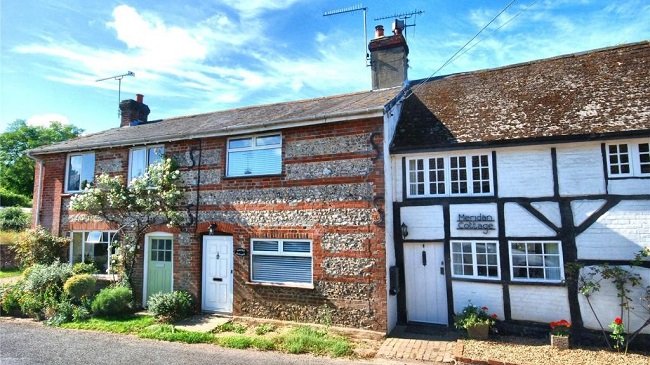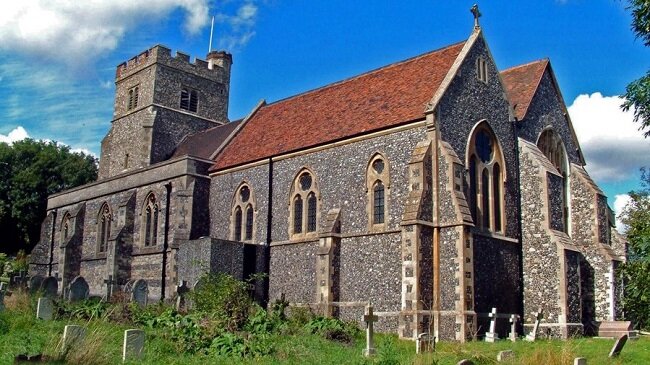Chiddingstone
With January already behind us, Mrs P and I decided it was high time we took our first day trip of 2022. So yesterday I spent some time looking online at details of various National Trust sites within an hour or so drive from our home. I also looked at similar places of historical note that are run by other bodies. Sadly, many are either partially or totally closed for the present. It would appear that from January to March many of these sorts of tourist attractions spend time repairing, refurbishing and preparing for forthcoming events. Grounds also have to be maintained. Hence, we were somewhat lacking in choice for suitable destinations. However, as the weather forecast was mild, today we opted to visit the village of Chiddingstone so we could walk in the grounds of the local castle and along the various footpaths in the area.
Chiddingstone is a village and civil parish located in Sevenoaks in the county of Kent, England. Located on the River Eden between Tonbridge and Edenbridge, Chiddingstone is unique in that the entire village (apart from the church and Chiddingstone Castle) is owned by the National Trust. It is considered to be the best example of a Tudor one-street village left in the country. Mentioned in the Domesday Book, Chiddingstone has several interesting buildings. The Castle Inn is a 15th-century building, which became a hostelry in 1730. The parish church St. Mary the Virgin is the fourth built upon the site. It was almost destroyed by a lightning fire in 1624. The churchyard has a stone gazebo dating from 1736, built by Henry Streatfeild whose family owned much of the land in the area. The National Trust bought the village in 1939.
Chiddingstone Castle was built by the Streatfeild family and served as their seat from the early 16th century until the beginning of the 20th century when the family left the castle. Much of the current structure dates from the early 19th century although it incorporates elements of the earlier buildings on the same site. The Castle lake measures around 3.5 hectares and separates the village of Chiddingstone from the grounds of the Castle. It is naturally stocked with wild Carp, Bream and Perch. It held the record for the largest Bream for 37 years, from 1945. Both the castle with it’s collection of painting and artefacts, as well as the grounds and lake are open to the public. The lake is a popular fishing venue and the grounds link with several footpaths in the vicinity, offering woodland walks and trails through the local fields.
Although an extremely picturesque village, access and parking are somewhat limited. The minor roads are not ideal for larger vehicles and some of the views and photo opportunities are blocked by the practical parking requirements of village residents. However, it was still pleasant to walk around the castle grounds today, as well as peruse the village and churchyard. Chiddingstone is a very tranquil place and apart from groundskeepers removing some recent storm damage, it was a pleasure to be away from the sound of traffic. I would have liked to have visited the castle itself but it is the wrong time of the year. In total we only spent about 90 minutes in Chiddingstone. Perhaps including a visit to the neighbouring villages of Chiddingstone Causeway and Charcott would make a more substantive day out.


